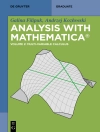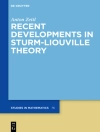This concise monograph present the complete history of the domination game and its variants up to the most recent developments and will stimulate research on closely related topics, establishing a key reference for future developments. The crux of the discussion surrounds new methods and ideas that were developed within the theory, led by the imagination strategy, the Continuation Principle, and the discharging method of Bujtás, to prove results about domination game invariants. A toolbox of proof techniques is provided for the reader to obtain results on the domination game and its variants. Powerful proof methods such as the imagination strategy are presented. The Continuation Principle is developed, which provides a much-used monotonicity property of the game domination number. In addition, the reader is exposed to the discharging method of Bujtás. The power of this method was shown by improving the known upper bound, in terms of a graph’s order, on the (ordinary) domination number of graphs with minimum degree between 5 and 50. The book is intended primarily for students in graph theory as well as established graph theorists and it can be enjoyed by anyone with a modicum of mathematical maturity.
The authors include exact results for several families of graphs, present what is known about the domination game played on subgraphs and trees, and provide the reader with the computational complexity aspects of domination games. Versions of the games which involve only the “slow” player yield the Grundy domination numbers, which connect the topic of the book with some concepts from linear algebra such as zero-forcing sets and minimum rank. More than a dozen other related games on graphs and hypergraphs are presented in the book. In all these games there are problems waiting to be solved, so the area is rich for further research.
The domination game belongs to the growing family of competitive optimization graph games. The game is played by two competitors who take turns adding a vertex to a set of chosen vertices. They collaboratively produce a special structure in the underlying host graph, namely a dominating set. The two players have complementary goals: one seeks to minimize the size of the chosen set while the other player tries to make it as large as possible. The game is not one that is either won or lost. Instead, if both players employ an optimal strategy that is consistent with their goals, the cardinality of the chosen set is a graphical invariant, called the game domination number of the graph. To demonstrate that this is indeed a graphical invariant, the game tree of a domination game played on a graph is presented for the first time in the literature.
Table des matières
1. Introduction.- 2. Domination Game.-3. Total Domination Game.- 4. Games for Staller.- 5. Related Games on Graphs and Hypergraphs.-References.-Symbol Index.
A propos de l’auteur
Michael A. Henning has devoted much of his research interests to the field of domination theory in graphs. He has been both plenary and invited speakers at several international conferences and is a prolific researcher having published over 460 papers to date in international mathematics journals. Henning was born and schooled in South Africa having obtained his Ph D at the University of Natal in April 1989. In January 1989, he started his academic career as a lecturer at the University of Zululand, before accepting a lectureship in mathematics at the former University of Natal in January 1991. In January 2000, he was appointed a full professor at the University of Natal, which later merged with the University of Durban-Westville to form the University of Kwa Zulu-Natal in January 2004. After spending almost 20 years at the University of Kwa Zulu-Natal and one of its predecessors, the University of Natal, Michael moved to the University of Johannesburg in May 2010 as a research professor. He co-authored a
Springer Briefs in Mathematics From Domination to Coloring: The Graph Theory of Stephen T. Hedetniemi and co-authored the
Springer Monographs in Mathematics book
Total Domination in Graphs and in 2020, he co-authored Springer’s
Developments in Mathematics book
Transversals in Linear Uniform Hypergraphs.












